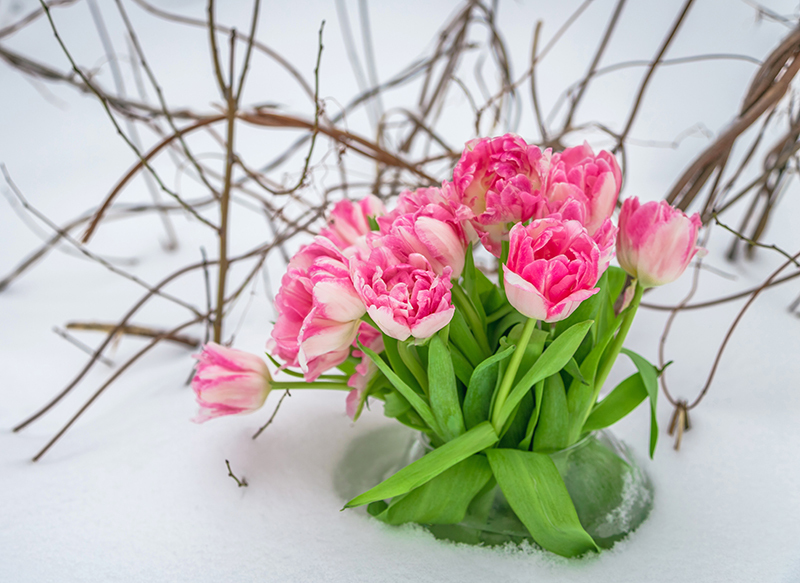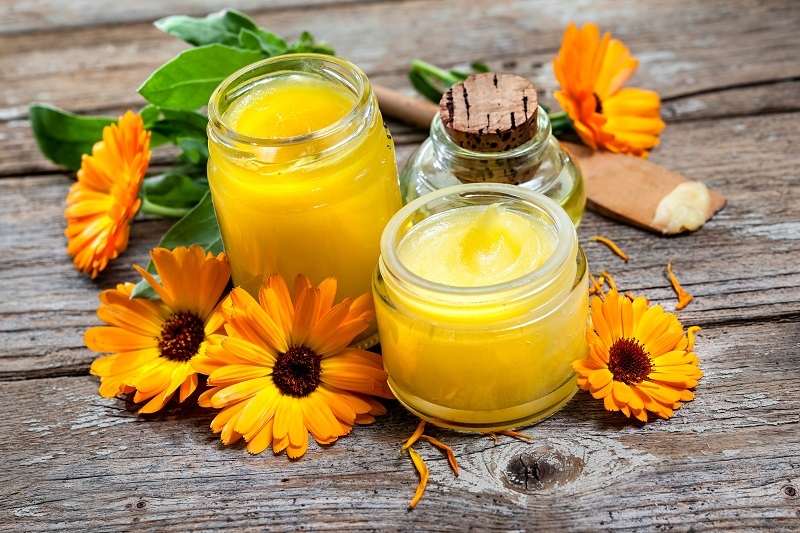Extend the Beauty of Your Poinsettias with These Tips
Posted on 23/08/2025
Extend the Beauty of Your Poinsettias with These Tips
Poinsettias are one of the most beloved symbols of the holiday season, instantly recognizable by their vibrant red, pink, cream, or white bracts. While they are most commonly displayed during Christmas, savvy plant lovers know they can enjoy poinsettias long after the festivities have ended. In this comprehensive guide, you'll discover expert tips and proven techniques to prolong the life, vibrancy, and beauty of your poinsettias well past the holidays. Let's learn how to make your poinsettias thrive year-round!
Why Poinsettias Are Popular Holiday Plants
Poinsettias (Euphorbia pulcherrima) originally hail from Mexico and Central America, where they grow as perennial shrubs in warm climates. Their vivid, colorful bracts (often mistaken for flowers) and lush green foliage make them a holiday favorite. Historically associated with Christmas thanks to Mexican legend and their timely winter bloom, poinsettias can also bring a pop of color indoors any time of year. But how can you truly extend the beauty of your poinsettias?

Tips to Prolong Poinsettia Blooms and Vibrancy
If you want your poinsettias to look stunning weeks or even months after December, follow these time-tested tips:
1. Choose a Healthy Poinsettia
- Look for poinsettias with dense, green foliage all the way down the stems.
- Avoid plants with wilted, yellowing, or dropped leaves.
- Check for intact, unblemished bracts and a cluster of small yellow flowers (cyathia) at the center-- a sign the plant is fresh.
- Ensure the plant hasn't been exposed to cold drafts or extreme temperatures during transport from the store.
2. Provide Optimal Light Conditions
Poinsettias love bright, indirect sunlight. Place your plant near a sunny window but out of direct midday rays, which can scorch the leaves.
- East or west-facing windows are ideal.
- Rotate the plant every few days to encourage even growth and more symmetrical bracts.
- If natural light is insufficient, use a grow light to supplement during winter months.
Proper lighting is a key factor in extending the lifespan and color vibrancy of your poinsettias.
3. Maintain Proper Temperature
Poinsettias prefer temperatures between 65?F and 75?F (18?C - 24?C) during the day and about 60?F (15?C) at night. Avoid exposing your plants to:
- Cold drafts from windows or doors
- Sudden temperature fluctuations
- Dry heat from radiators or heating vents
Consistent temperatures help prevent leaf drop and keep your poinsettias healthy.
4. Watering: Not Too Much, Not Too Little
Improper watering is a leading cause of premature poinsettia decline. To extend their beauty:
- Check soil moisture daily by sticking your finger about an inch below the surface.
- Water thoroughly when the top inch feels dry, but avoid letting the plant sit in standing water--this can cause root rot.
- Discard excess water from decorative foil wraps or saucers.
- Reduce watering frequency slightly during the plant's dormant period from late winter until spring.
Remember: It's better to slightly underwater than to overwater poinsettias!
5. Humidity Matters
Poinsettias thrive in higher humidity, as dry indoor air can cause leaf drop and faded bracts. To maintain the right moisture:
- Cluster plants together to increase local humidity.
- Place a tray of pebbles and water beneath the pot (but not touching the roots) to evaporate moisture into the air.
- Use a humidifier in particularly dry rooms.
6. Feed for Continued Health
After the major blooming phase (usually after January), start feeding your poinsettia with a balanced, all-purpose houseplant fertilizer every 3-4 weeks.
- Use a diluted 10-10-10 or 20-20-20 fertilizer according to package directions.
- Stop fertilizing while the plant is actively flowering; resume after the bracts begin to fade.
- Regular feeding helps promote lush green foliage and stronger root systems, ensuring your poinsettia remains beautiful for months.
Additional Ways to Make Your Poinsettias Last Longer
7. Avoid Drafts and Problem Spots
Poinsettias are sensitive to sudden changes in temperature and drafts from windows, doors, or even appliances. High-traffic areas where people brush against the plant can also damage delicate bracts. Place your poinsettia in a sheltered spot with stable conditions.
8. Practice Proper Pruning
- After the holiday display period, prune back the stems to 4-6 inches above the soil.
- Pruning encourages bushier growth and removes faded or damaged stems.
- Repeat light pruning in spring to maintain shape and encourage new leaves.
9. Repotting for Perennial Growth
If you plan to keep your poinsettia as a houseplant year-round, consider repotting it in spring:
- Choose a slightly larger pot with drainage holes.
- Use fresh, high-quality potting mix.
- Gently tease apart the roots if they are crowded.
Repotting revitalizes the plant and supports ongoing healthy growth.
10. Encourage Reblooming for Next Year
The secret to having colorful poinsettias next holiday season is forcing them to rebloom:
- Starting in early October, keep your poinsettia in complete darkness for 14-16 hours each night (cover with a box or place it in a dark closet).
- During the day, provide bright, indirect sunlight.
- After 8-10 weeks of this regimen, your poinsettia should begin to develop vivid bracts once again.
This process mimics the natural cycle of short autumn days and long nights, which triggers blooming.
How to Display Your Poinsettias for Maximum Impact
Combine Poinsettias with Other Indoor Plants
Poinsettias pair beautifully with ferns, ivies, or peace lilies in mixed planters, creating a lush and vibrant indoor garden. The contrast of green textures with poinsettia bracts makes for a show-stopping display that can last all winter long.
Creative Decorating Ideas
- Line up small poinsettias along a windowsill for a festive touch.
- Group different colored varieties in a decorative basket.
- Use poinsettias as a dramatic centerpiece, surrounded by candles or seasonal ornaments.
Common Mistakes That Shorten Poinsettia Lifespans
To successfully prolong the beauty of poinsettias, avoid these frequent pitfalls:
- Overwatering or underwatering--always check the soil first.
- Placing in direct sunlight, which can burn bracts and leaves.
- Exposing to temperatures below 55?F (13?C), which can shock or damage the plant.
- Forgetting to remove the decorative plastic wrapping, which traps water and leads to root rot.
- Neglecting to fertilize after the initial bloom phase.
Avoiding these mistakes goes a long way in keeping poinsettias looking lovely for months.
Poinsettia Year-Round Care Calendar
- December - January: Display in a prominent, bright spot. Water regularly, but don't fertilize during the bloom.
- February - March: As bracts fade, prune stems and reduce watering slightly.
- April - May: When new growth starts, repot if needed and resume light fertilization.
- June - September: Move outdoors if possible (in mild climates), in partial shade. Continue watering and feeding.
- October - November: Begin the "dark-night treatment" for 8-10 weeks to encourage colorful bracts for the holidays.

Poinsettia FAQs: Keeping Your Plant Beautiful Year After Year
Are poinsettias poisonous to pets?
Poinsettias have a mild toxicity to cats and dogs but are rarely dangerous. Ingesting leaves may cause mild stomach upset. Keep the plants out of reach of curious pets, just to be safe.
Can I plant my poinsettia outside?
In USDA Zones 9-11, poinsettias will survive outdoors as perennial shrubs. For colder climates, treat them as houseplants or bring them indoors when temperatures drop below 55?F (13?C).
Why are my poinsettia's leaves turning yellow?
Common reasons include overwatering, underwatering, low humidity, or exposure to drafts. Check care conditions and adjust as needed.
How do I get my poinsettia to bloom again?
Follow the dark-night treatment for 8-10 weeks in autumn, ensuring complete darkness for at least 14 hours nightly and bright, indirect light during the day.
Conclusion: Prolonging the Charm of Poinsettias
With thoughtful watering, the right light, proper feeding, and attention to temperature and humidity, poinsettias can remain attractive houseplants for many seasons--not just during the Christmas holidays. Remember these proven tips to extend the beauty of your poinsettias, and you'll enjoy their colorful appeal all year long.
Give your poinsettias the care they deserve, and let them brighten your home's decor month after month!
Latest Posts
Prolong the Beauty of Your Cut Flowers
Extend the Beauty of Your Poinsettias with These Tips
Unveiling the Mysterious Side of Sunflowers





